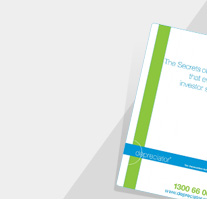Rental Property Depreciation Rates
Property investors should be aware of the rental property depreciation rates that apply to their properties. The ATO decides how long something will last with fair use. They call this the Effective Life. The Effective Life then drives the % depreciation rate that can be used.
Residential buildings, if constructed after September 1987, have an Effective Life of 40 years. Buildings depreciate at 2.5% every year for 40 years – 2.5% x 40 years = 100%. This also applies to structural renovations carried out after September 1987 to buildings of any age.
So if you have a residential property that was built in 1990 and renovated in 2010, you depreciate the original building at 2.5% until 2030 and the renovation at 2.5% until 2040. If you have a 1960s property that was renovated in 2000, you depreciate the renovation only until 2040.
This deduction for buildings is called the Special Building Write-Off.
Rental Property Depreciation rates for assets are more complicated.
Assets (fixtures and fittings) are the items in a property that will wear out more quickly than the building. The ATO like to use the term “easily removable” as a general description of items that are classified as assets. In most cases, Depreciation can only be claimed on brand new assets. More on that below.
They have a shorter Effective Life and therefore a higher % depreciation rate than the building depreciation rate.
Carpet, for example, suffers a lot of wear and tear and has an Effective Life of 10 years. An oven has an Effective Life of 12 years. Artificial grass has an Effective Life of 5 years. There are hundreds and hundreds of Assets that can be found in residential rental properties, all with different depreciation rates.
Unfortunately, some people don’t realise the rental property depreciation rates for Assets differ from buildings. Uninformed property investors get less depreciation. More on that at the button of the page.
Assets can be depreciated using the Prime Cost method or the Diminishing Value method. It’s hard to explain the difference simply, but Prime Cost spreads the depreciation evenly, whereas with Diminishing Value there is more depreciation in the early years. Just about every investor uses the Diminishing Value method.
Depreciation Rates for Used Assets
To complicate things, the ATO introduced a new rule on 09/05/2017. From that date, any assets included with a property purchase must be brand new or no depreciation can be claimed. This also applies to brand new properties that were purchased earlier, but became an investment on or after 01/07/2017. I.e. you were living there and then started leasing it out.
In simple terms, if you now buy a used (more than 6 months old) residential property, you can depreciate the building at a rate of 2.5%, but not the assets. Those assets will typically be only a few % of the total available depreciation in the long term anyway.
You can always claim depreciation on assets in brand new properties. Depreciation is also available on any new assets you purchase, or if a renovation was done immediately prior to sale. i.e. those assets were brand new when it became an investment.
Depreciation Rates for Low Value assets
Trust the ATO to make things complicated. When assets fall below a certain value, you’re allowed to put them in a Low Value Pool. Once they’re in the low value pool the depreciation rate is high and the assets depreciate even more rapidly.
Do Renovations Affect Rental Property Depreciation Rates?
If you buy a property that has been renovated, or if you renovate a property, the depreciation rate for the structural work is 2.5% and the work starts depreciating from when it is completed. Assets that were installed brand new (unused) immediately before, or after a property becomes an investment can also be depreciated.
How to look up depreciation rates for rental properties.
If you’re super keen to know the depreciation rates for specific assets, the ATO produce a Rental Property Guide every year. There’s a link on this ATO page https://www.ato.gov.au/general/property/residential-rental-properties . It lists the depreciation rates for every asset imaginable. While it might be interesting to look up the depreciation rates, most property investors will leave the application of the depreciation rates to the experts – Quantity Surveyors.
Can you just use the Capital Works Depreciation Rate?
Some investors and the occasional accountant try to work out depreciation deductions without using a Quantity Surveyor. It’s a complicated business and they lack the tools and knowledge Quantity Surveyors use. They often simply bundle everything up and use the capital works depreciation rate of 2.5%.
Applying that capital works depreciation rate across the board creates a few problems. It means much lower depreciation deductions for many properties, which is great for the ATO, not so great for the investor. In some cases it means assets will depreciate for years after they should be worth nothing. More commonly, after the changes introduced in 2017 depreciation is being claimed on assets where it shouldn’t be.
Leave it to the experts; get a Depreciation Schedule from a specialist Quantity Surveying firm like Depreciator. Call 1300 66 00 33 now to enquire about your investment property







